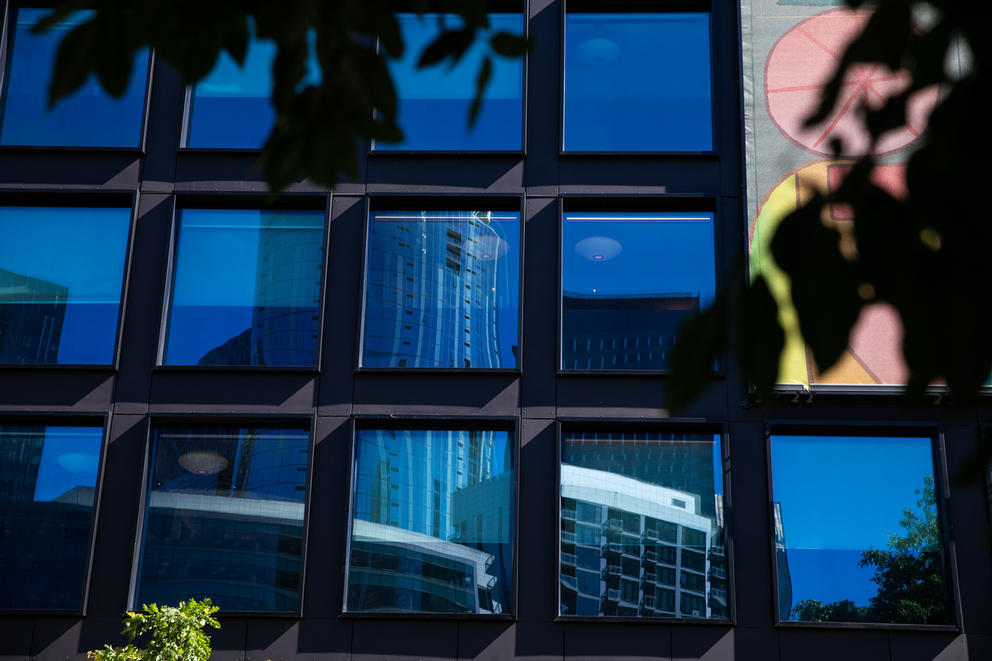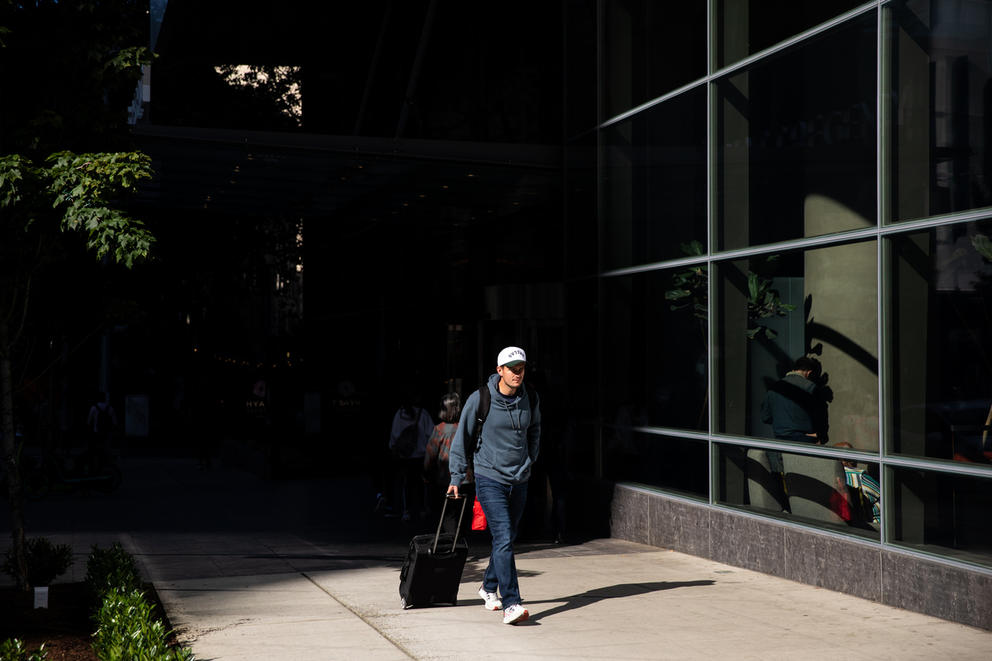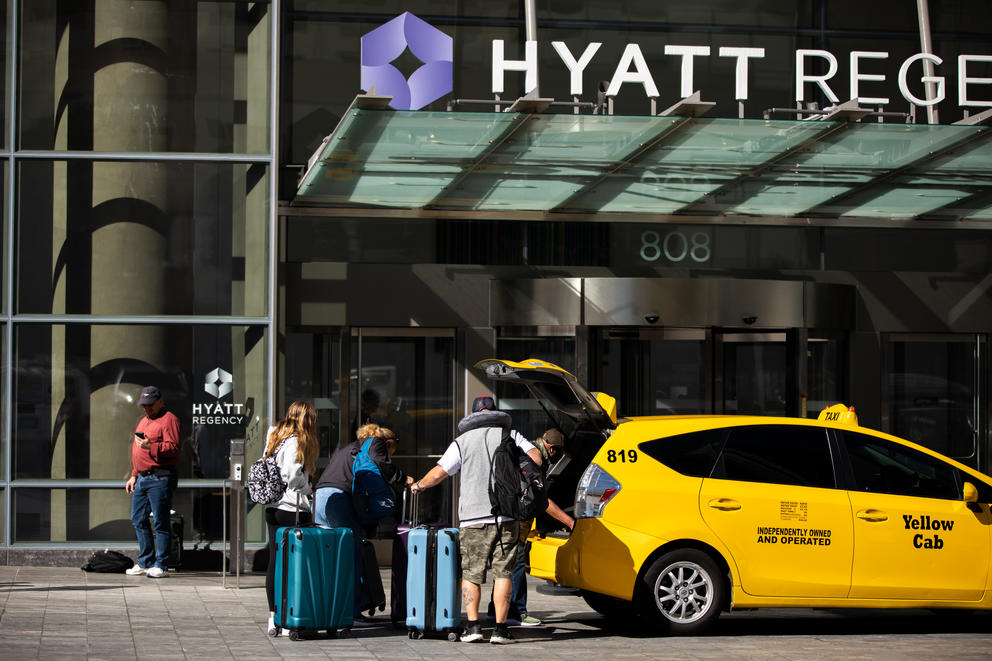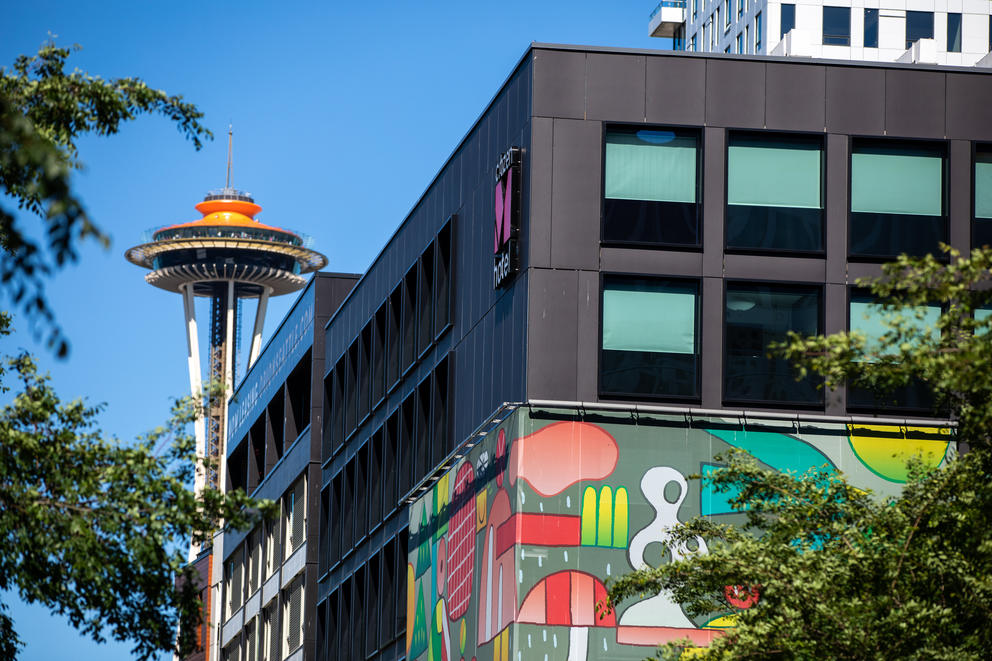Now, as summer 2022 finally gets underway in Seattle, tourists are walking the waterfront, cruise ships are arriving and hotel occupancy rates are climbing back up to 60%. To help aid that recovery and ensure more visitors come and stay in the city, the hospitality industry is turning to what may seem like a counterintuitive approach: a higher fee on hotel rooms.
This story is part of a Crosscut focus on tourism: Open for Visitors
The Seattle Tourism Improvement Area is an 11-year-old special assessment authority that requires 70 hotels in the greater downtown core to charge a per-room, per-night fee. When it was created in 2011, the STIA fee was set at $2 per-room, per-night. In March, the Seattle City Council voted to double it to $4. Visit Seattle, the city’s tourism promotion group, said the doubled rate will allow them to bolster their marketing efforts to aid the industry’s recovery and compete with better-funded markets like Portland.
“The pandemic taught us how fragile our industry is,” said John Boesche, Visit Seattle’s senior vice president of tourism. “It also reminded us how competitive it is. Every destination is rolling out the welcome mat in a very aggressive way because the visitor market is so coveted because of what they contribute to a local destination.”
In 2019, at the $2/night rate, the STIA generated about $8 million for Visit Seattle. Because Seattle still has fewer visitors than before the pandemic, the $4 rate is projected to raise about $9.8 million in 2022.
The vast majority of that money – $6.4 million – goes toward advertising that promotes Seattle as a leisure destination. Ali Daniels, Visit Seattle chief marketing officer, said they’re targeting more regional travelers within Washington, Oregon, California and British Columbia. That’s a shift from the pre-pandemic approach, when Visit Seattle marketed the city across the United States as well as in China, South Korea, Japan, the United Kingdom, Ireland, Germany, France, Australia and New Zealand.
Another $986,000 of the STIA revenues pays for some of the Visit Seattle staff's salaries. Other expenditures include $500,000 for partnerships with international travel agencies and marketing groups; $375,000 for public relations and press trips; $150,000 towards market research; and $75,000 to promote Seattle events such as the Rock ‘n’ Roll Marathon and the Taste Washington wine festival. The rest goes toward photography and videos for promotional materials, expenses and a reserve fund.
In March, as the city council considered approving the doubled STIA rate, Councilmember Dan Strauss drew a line from tourism to the city’s ongoing homelessness crisis, which is especially concentrated downtown where many visitors stay.
“How are you partnering with the Regional Homelessness Authority?” Strauss asked Visit Seattle representatives during a March 23 council committee meeting. “For the RHA to be successful, we all have to do a little bit.”
Boesche told Crosscut that the STIA ordinance restricts the revenue to leisure tourism-related expenses, so they cannot use it to pay for homelessness response work. But he argues that the tourism industry helps address the housing crisis because 37.5% of the King County lodging tax helps pay for affordable housing and services for homeless youth.
As the hotel industry recovers, the doubled STIA rate is expected to start generating $18 to $19 million a year for Visit Seattle, a figure that could put them closer to other destinations relying on a similar special taxing authority. Los Angeles generated $15 million in 2021 from its special tourism tax. Portland, one of Seattle’s biggest competitors for tourism, raised $22 million.
Steve Sasso, Motif Hotel general manager and chair of the STIA ratepayers board, said the marketing efforts are especially important in the off season. He explained, “In the summer we’ll do well. But it’ll be hard without really cohesive marketing campaigns and efforts by everybody to continue to raise that level of awareness to keep visitors coming during shoulder season and off season.”
Some say that the pandemic recovery isn’t being felt evenly among hotel and restaurant owners and management and the service workers in the industry.
“Workers and our members hit rock bottom in the pandemic. There are fewer people at work still in most of our workplaces. Those fewer people are doing more work than they did before the pandemic and doing it in more difficult conditions,” said Stefan Moritz, director of strategic affairs at Unite Here Local 8, a union that represents hotel and hospitality workers.
According to the most recent data from King County, staffing in the lodging industry is still down 39% from pre-pandemic levels. For one, that means fewer people are left to do the work of nearly twice the staff as visitor rates recover. But Moritz said there are added challenges, such as pandemic policies of cleaning rooms only between guests instead of daily, meaning rooms can be far messier, creating even harder conditions for short-staffed housekeepers.
Moritz said the union doesn’t have a stance on doubling the STIA or how it’s being used to market tourism. Instead, he sees the return from rock bottom as a moment to think bigger about how the industry operates.
“We need to have a bigger conversation about what a recovery in the industry looks like and how we can build more sustainable tourism in Seattle in general. Just increasing the budget for marketing isn’t doing that. For us it’s a question of fighting for a better hospitality industry for both the workers we represent and also the community.”
Boesche recognized the challenging moment the industry is in, both for bringing guests back and for rebuilding its workforce.
“It’s a game of chicken-and-the-egg right now,” Boesche said. “It creates a friction period where demand is surging, and that’s going to be superseded by some of the challenges with staffing levels. I know hotels are working to bring back staff and ensure tourism and hospitality is a lifelong industry for folks.”
Correction: A previous version of the story referred to the STIA fee as a "tax." The City of Seattle and Washington Department of Revenue consider it a fee or assessment, not a tax.







